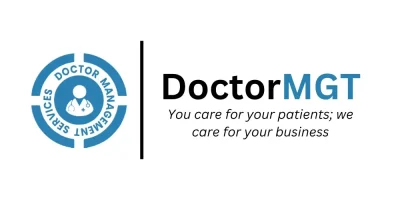The financial health of a medical practice fills in as a significant gauge, reflecting the foundation’s general prosperity and its capacity to give quality consideration. An extensive financial analysis is vital for unwinding the intricacies that oversee the financial beat of a medical practice. In this guest post, we will dive into the complexities of financial management inside medical services, looking at key measurements, challenges, and strategies that enlighten the way to a powerful financial structure.
Understanding the Financial Landscape of Medical Practices
Medical practices, whether little facilities or large hospitals, work inside an exceptional financial ecosystem. The revenue streams, consumptions, and financial challenges looked by these institutions are particular from those experienced in different businesses. A careful analysis starts with figuring out the basic parts that shape the financial scene of a medical practice.
Revenue Streams:
The essential revenue hotspots for medical practices incorporate patient services, protection repayments, and government programs. Analyzing the appropriation of revenue among these streams gives experiences into the practice’s financial stability and reliance on specific sources.
Expenditures and Overheads:
Operational costs, staff salaries, medical gear, and office support comprise the majority of expenditures. Recognizing areas of high use and improving operational productivity is essential for maintaining a healthy main concern.
Regulatory Compliance:
Medical practices work under rigid administrative systems. Consenting to healthcare regulations and keeping up to date with changes isn’t just a legitimate prerequisite yet additionally influences financial viability. Non-compliance can bring about punishments and reputational damage.
What are the different types of financial statement analysis?
Most often, analysts will use three main techniques for analyzing a company’s financial statements.
First, horizontal analysis includes looking at historical information. Typically, the motivation behind horizontal analysis is to identify development trends across various time periods.
Second, vertical analysis looks at things on a financial statement comparable to one another. For example, a cost thing could be communicated as a percentage of company deals.
Finally, ratio analysis, a focal piece of basic value examination, looks at detailed information. Price-to-earnings (P/E) ratios, profit per offer, or profit yield are instances of ratio analysis.
Key Metrics for Financial Health
To gauge the financial health of a medical practice, certain key measurements act as crucial indicators. These metrics give a preview of the institution’s performance, directing partners in settling on informed choices.
Accounts Receivable Turnover (ART):
ART measures how proficiently a clinical practice gathers installments for services delivered. A high ART demonstrates successful billing and collections processes, adding to a steady income.
Profitability Ratios:
Examining profitability proportions, for example, net revenue and return on assets evaluates the proficiency of asset use and in general financial performance. These proportions are fundamental for benchmarking against industry principles.
Days in Accounts Receivable (DAR):
DAR estimates the typical number of days it takes for a medical practice to gather payment subsequent to offering types of services. A lower DAR means brief revenue acknowledgment and effective billing processes.
Operating Margin:
Operating margin reveals the level of income held subsequent to taking care of operational expenses. A positive operating margin is characteristic of a financially maintainable practice.
Why Is Financial Analysis Useful?
The financial analysis plans to dissect whether a substance is steady, fluid, dissolvable, or sufficiently productive to warrant a monetary investment. what not to say to your pain management doctor utilized to assess economic patterns, set financial policies, assemble long haul plans for business activity, and distinguish ventures or companies for investment.
Challenges in Financial Management for Medical Practices
While medical practices assume an urgent part in healthcare delivery, they face a few challenges that can affect financial stability. These challenges require key answers to guarantee supported economic viability.
Insurance Reimbursement Issues:
Deferrals and denials in protection repayments can strain income. Practices need robust billing systems and proactive measures to explore the intricacies of protection repayment.
Rising Operational Costs:
The continuous advancement of medical technology and the interest for excellent consideration add to escalating operational costs. Practices should work out some kind of harmony between offering first class services and keeping up with financial sustainability
Evolving Healthcare Regulations:
Successive changes in healthcare regulations can present challenges for consistency. Remaining informed and implementing vital changes in work processes and documentation processes is fundamental to stay away from financial penalties.
Types of Financial Analysis
There are two types of financial analysis: fundamental analysis and technical analysis.
Fundamental Analysis
Fundamental analysis utilizes proportions accumulated from information inside the financial statements, for example, a company’s earnings per share (EPS), to decide the business’ value. Using ratio analysis notwithstanding a careful review of economic and financial situations encompassing the company, the analyst can show up at an intrinsic value for the security. The ultimate objective is to show up at a number that an investor can contrast and a security’s ongoing cost to see whether the security is under-valued or overvalued.
Technical Analysis
Technical analysis utilizes measurable patterns accumulated from exchanging action, like moving averages (MA). Basically, technical analysis expects that a security’s cost as of now reflects generally freely accessible data and on second thought centers around the statistical analysis of price movements. Technical analysis endeavors to comprehend the market opinion behind cost patterns by searching for examples and trends instead of dissecting a security’s fundamental attributes
Strategies for Financial Success in Medical Practices
Tending to the challenges in financial management requires vital preparation and the reception of best practices. Here is a procedure that medical billing service California can utilize to guarantee financial achievement:
Investing in Technology:
Implementing advanced healthcare data systems and billing programming can smooth out administrative cycles, diminishing errors and further developing billing productivity.
Enhancing Revenue Cycle Management:
A robust revenue cycle management procedure, including productive billing and collection processes, can upgrade income and limit the effect of deferred repayments.
Cost Containment and Efficiency Measures:
Regularly reviewing functional cycles and recognizing regions for cost containment can add to long haul financial stability. This incorporates renegotiating seller contracts, streamlining staffing levels, and embracing technological solutions that further develop effectiveness.
Educating Staff on Financial Responsibility:
Guaranteeing that administrative and clinical staff are instructed on the financial parts of healthcare is essential. Staff members ought to be prepared to grasp the significance of precise coding, legitimate documentation, and patient billing processes.
Conclusion
A complete financial analysis is imperative for revealing the complexities of a medical practice’s financial health. Understanding key metrics, tending to difficulties, and executing strategic financial management rehearses are fundamental stages toward guaranteeing the sustained viability of healthcare institutions. By focusing on the economic pulse of a medical practice, stakeholders can add to the conveyance of value care while keeping up with financial sustainability in a steadily developing healthcare scene.







